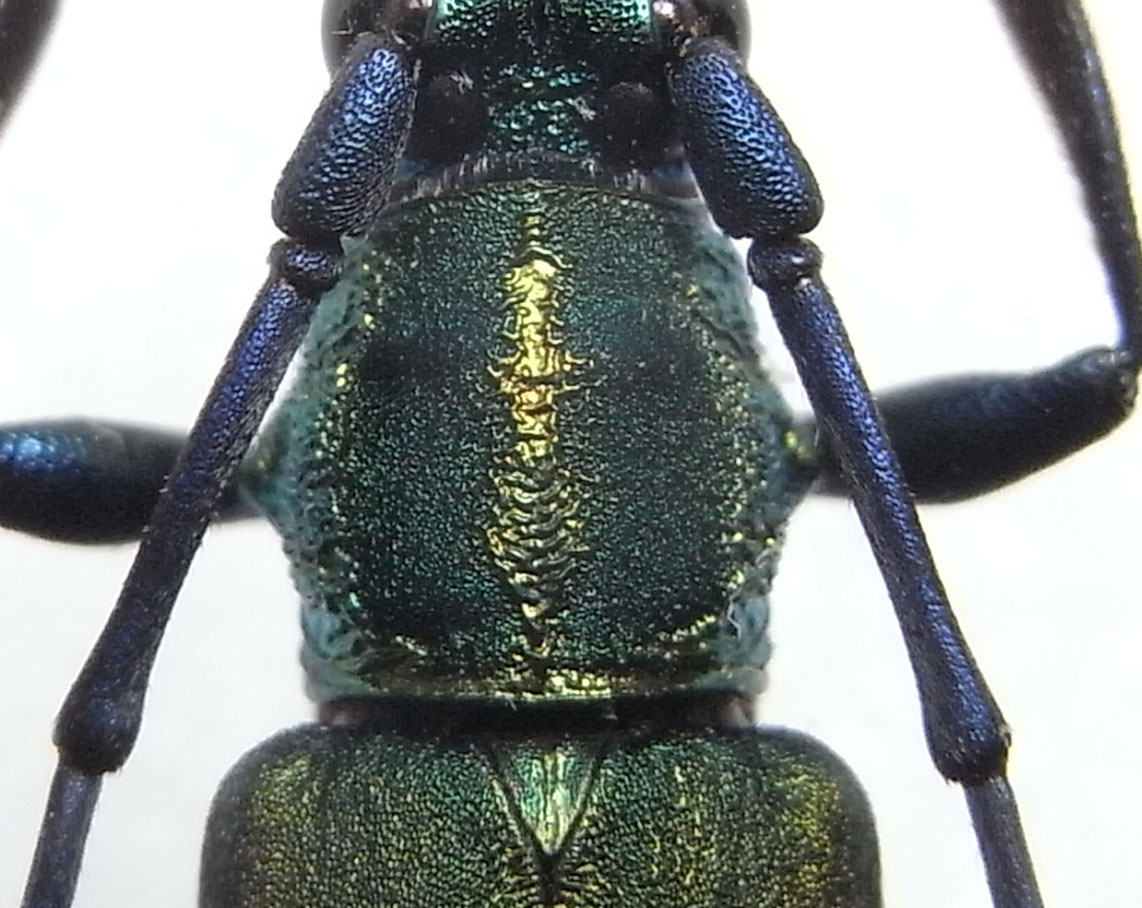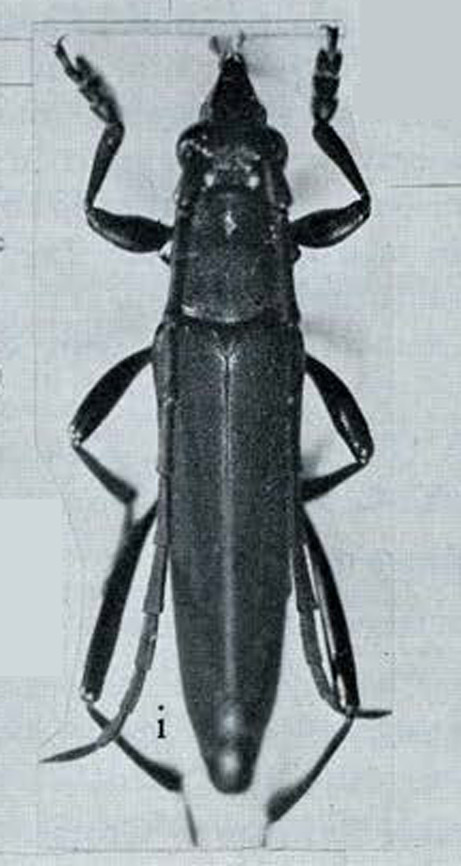| T O P I C R E V I E W |
| Xavier |
Posted - 24/03/2013 : 13:54:09
 
22 mm.
Hua Phan, nord-est Laos.
Callichromatini
En dehors de la tribu, aucune idée  |
| 7 L A T E S T R E P L I E S (Newest First) |
| Xavier |
Posted - 08/12/2013 : 19:10:35
ok, I keep this name for the moment. I will try to find more material next spring.
Thank you  |
| Andre |
Posted - 08/12/2013 : 18:02:55

102.62 KB
Polyzonus (Promeces) sinense Hope, 1841
left side Ex. from Vietnam, middle: HT (BMNH), right side Xavier's Ex. from Laos.
The sculpture of the middle line is a little bit variable and the pronotum of the female is slightly broader !
The Abb. in Gressitt......1970 is for me a Polyzonus spec. near P. prasinus White, 1853 !!! |
| Xavier |
Posted - 07/12/2013 : 10:13:26
Thanks a lot Andre. Well, I'm not able too to use small pictures from Bentanachs publications...

Here the picture of Polyzonus sinense (Hope, 1843) in Laos fauna. |
| Andre |
Posted - 07/12/2013 : 09:39:04
Dabei handelt es sich um Polyzonus sinensis Hope, 1843.
Konnte Tiere aus N - Laos mit dem Typus vergleichen. Die Abb. in Bentanachs 2012 sind eher schlecht.
Ob das zugeordnete Tier (Abb.121) zum HT passt, scheint mir fraglich.....wie auch bei einigen anderen Arten. |
| Xavier |
Posted - 31/03/2013 : 19:40:18
Thanks Andre;
I will take pictures of all Callichromatini Types from S-E Asia next time in Paris ! Sure.  |
| Andre |
Posted - 31/03/2013 : 19:27:03
Hallo Xavier, I think you are right.
This spec. is nearly Polyzonus sinensis Hope (described as Chelidonium), but the dark green spots and the shiny medial line are clear.
From green Chelidonium venereum is distinguished by the non extended antennal segments. I have this spec. from Laos and Vietnam (Tam Dao).
But I think you can see the HT during your next visit in Paris, and so we are sure. |
| Xavier |
Posted - 29/03/2013 : 18:53:04
Avec le pronotum tuberculé ET les scapes arrondis à l'apex, j'arrive au genre Chelidonium (Gressitt-1970, page 150).
Résumé de la clef du genre page 150 :
-->Antennal segments briefly toothed ectoapically ; Pronotal disc without swellings ; Pronotum golden green with a large blackish area on each side of middle of disc ; hind tibia somewhat gradually widened apically.
Je n'ai pas la description originale de PIC, mais ce pourrait donc être Chelidonium binotaticolle Pic, 1937.
Un avis éclairé sur ce groupe difficile ?  |


